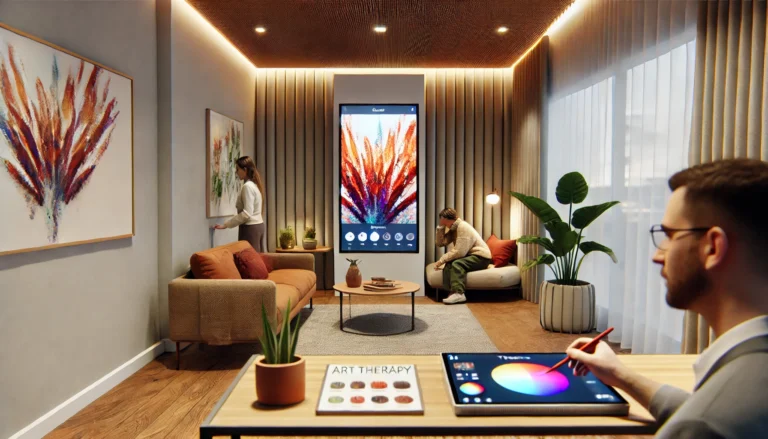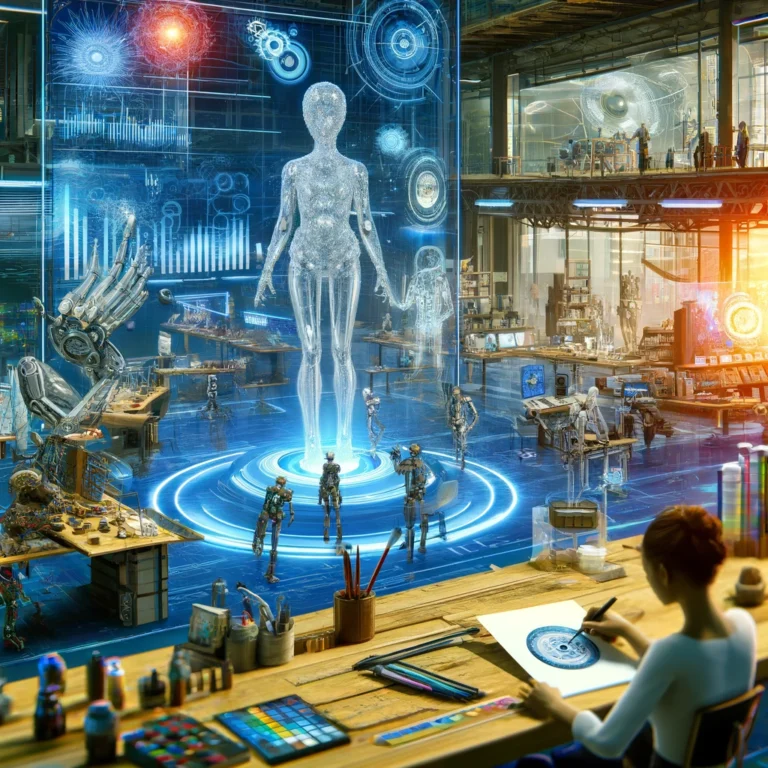Artificial intelligence (AI) has undeniably revolutionized the design industry, providing innovative and efficient solutions that have transformed the way designers work. However, this rapid technological advancement has also raised ethical concerns, such as the impact on originality, privacy, and potential bias in AI-generated content. This article explores these ethical issues and offers balanced perspectives from those who embrace AI in design and those who express concerns about its impact on the creative process.
Section 1: Originality and Authenticity
The rise of AI in design has led to a debate on the originality and authenticity of AI-generated content. Proponents argue that AI offers a new creative tool that can enhance human creativity, allowing designers to explore new design possibilities and push the boundaries of their imagination. In this view, AI is a valuable resource for creative exploration, helping designers to generate new ideas and create more innovative and sophisticated designs.
On the other hand, critics worry that AI-generated content may undermine human creativity and originality. They argue that relying too heavily on AI can result in derivative designs that lack the unique touch of a human creator. Furthermore, there are concerns about the ownership of AI-generated content, as the distinction between human and machine-generated designs becomes blurred. To ensure a fair balance, it is important to develop clear guidelines on the ownership and attribution of AI-generated designs, as well as encourage designers to use AI as a tool rather than a replacement for human creativity.
Section 2: Privacy and Data Security
Another ethical concern surrounding the use of AI in design is the potential for privacy violations and data breaches. AI systems often rely on vast amounts of user data to create personalized and targeted designs. While this can lead to improved user experiences, it also raises questions about the collection, storage, and use of personal information.
Proponents of AI in design believe that with proper data management practices and transparency, AI can enhance the design process without compromising user privacy. They emphasize the importance of implementing strong data security measures and adhering to privacy regulations to ensure that personal information is protected.
Critics, however, argue that the potential for misuse of user data is a significant risk that cannot be ignored. They caution against over-reliance on AI, urging designers to be mindful of the ethical implications of using personal data in their work. It is crucial to strike a balance between leveraging the benefits of AI while respecting user privacy and data security.
Section 3: Bias and Fairness
The potential for bias in AI-generated content is another key ethical concern. AI systems can inadvertently perpetuate existing biases or stereotypes present in their training data, leading to unfair and unbalanced designs. This has raised questions about the fairness and inclusivity of AI-generated content.
Advocates for AI in design argue that, with proper oversight and continuous monitoring, it is possible to mitigate and even eliminate bias in AI-generated content. They believe that AI can be a force for good, promoting diversity and inclusivity in design by identifying and correcting human biases.
Opponents, however, express concerns that AI-generated content may perpetuate harmful stereotypes and biases, particularly when designers are not aware of or do not address these issues. To ensure that AI-generated content is fair and inclusive, it is important for designers to actively engage with the ethical implications of their work, and for the design community to develop guidelines and best practices for addressing potential bias in AI-generated content.
Conclusion:
The use of AI in design presents both incredible opportunities and significant ethical challenges. By acknowledging and addressing these concerns, designers can strike a balance between leveraging the benefits of AI and maintaining their creative integrity, responsibility, and commitment to fair and inclusive design. Ultimately, the key to ethical AI use in design lies in fostering a collaborative relationship between humans and machines, ensuring that both contribute to the creative process in a way that is respectful, transparent, and accountable.
To achieve this balance, designers must stay informed about the ethical implications of their work and actively engage in discussions on the responsible use of AI in design. Professional organizations, educational institutions, and industry leaders should collaborate to develop guidelines, training programs, and certifications that promote ethical AI use.
Furthermore, transparency and openness are crucial in addressing the ethical concerns of AI in design. Designers should communicate their AI methodologies and data management practices clearly to clients and users, allowing for informed decision-making and promoting trust in AI-generated content.
In addition, the design community should continue to invest in research and development of AI technologies that prioritize fairness, privacy, and security. By working together, designers, technologists, and other stakeholders can ensure that AI is used responsibly and ethically in the design industry, ultimately benefiting both creators and users alike.
In conclusion, the ethical use of AI in design is a shared responsibility that requires the collective effort of designers, developers, organizations, and users. By embracing this responsibility and striving to balance creativity and accountability, the design industry can harness the potential of AI while upholding the values that have made human creativity so unique and invaluable.










